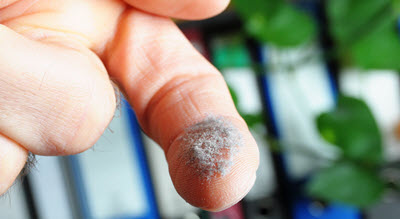
House dust can cause allergies | depositphotos © gunnar3000
The house dust allergy – info and facts
How bad a dust allergy is – this is not easy for people to understand, who are not affected. For these people, house dust allergy is a harmless word and they don’t give it much thought. This went so far that I, as a person affected, used to hear a “just wipe more dust”.
But house dust allergy is one of the worst allergies in western countries. It is the second most common allergy, right after pollen allergy. What is particularly bad about it, by the way, is that, in contrast to the pollen allergy, there is practically no resting phase in which the affected patient can recover. A house dust allergy is even more common throughout the year and in winter, because of the heating air.
Bestsellers
What causes house dust allergy?
Anyone who has a house dust allergy is not directly allergic to the dust. Rather, the dust contains small particles of mite faeces to which the allergy sufferer reacts.
The dust mite can be found in every living space all year round. No matter if house or (rented) apartment. The dust mites produce a lot of excrements in the course of their life. When this excrement dries, it decomposes. These smallest particles, invisible to the eye, combine with the normal dust in the house. The dust that swirls through the air is inhaled by every inhabitant. An allergy sufferer therefore does not react to the house dust itself, but to the mite’s excrement particles, which are located on the dust particles. These mite particles, which are very rich in protein, trigger the allergies. In addition, the person affected also comes into contact with the mites themselves, for example in bed. This further intensifies the allergy.
What exactly is a dust mite?
Mites, also the dust mite, belong to the genus of arachnids. They are only a fraction of a millimetre in size and are therefore so small that they can only be seen under a microscope. To illustrate: 15,000 mites can easily occur in one gram of dust.
Human skin scales serve the dust mites as food, but to a small fraction they also need moulds for digestion.
Where can the dust mites be found?
There are up to 1.5 million dust mites in a normal bed. In a double bed there can be even more. They love the bed because the night sweat makes it nice and damp and, overnight, the human body makes it nice and warm.
While we sleep, we sweat out a lot of fluids. In addition, we also release some moisture into the air through our breath. We lose a lot of skin scales at the same time and warm the bed. All this together creates the ideal climate for mites – for survival and reproduction.
Unfortunately, dust mites are not only found in beds, but also in carpets and upholstered furniture. This is why an allergy sufferer is always exposed to dust mites in other rooms too, and should therefore consistently fight dust mites.
Only from an altitude of about 1500 meters above sea level (NN) there are no dust mites. But sending all affected people into the high mountains is of course no solution. However, if you want to have some vacation from the mites, you should perhaps consider spending your next annual vacation in the mountains.
How does the house dust allergy express itself?
As we inhale the dust that is swirling around in the air as well as the faeces that have combined with the dust, allergy sufferers experience violent reactions.

allergic symptoms | depositphotos © muhammed
If you have only a mild allergy, you will react with red eyes and a runny or blocked nose. The symptoms resemble a mild hay fever.
Serious allergy sufferers, on the other hand, have breathing problems and even shortness of breath. In addition, there is coughing, slime formation and whistling breath sounds.
If you leave a house dust mite allergy untreated for a longer period of time, you may even experience the so-called “floor change“. This is when a severe allergic asthma manifests itself.
Summary
A house dust allergy is a bad thing for those affected. It is very difficult to escape from the trigger, i.e. the dust mites. Only from about 1500 meters above sea level there are no more mites in the living space.
Read the summary about dust mites on our home page or in our next related article about how to fight a dust allergy and the dust mites.
Letzte Aktualisierung der Amazon-Preise am 2024-11-28 | Preise können sich inzwischen geändert haben Affiliate Links & Bilder von der Amazon Product Advertising API | Preis inkl. MwSt., zzgl. Versandkosten
